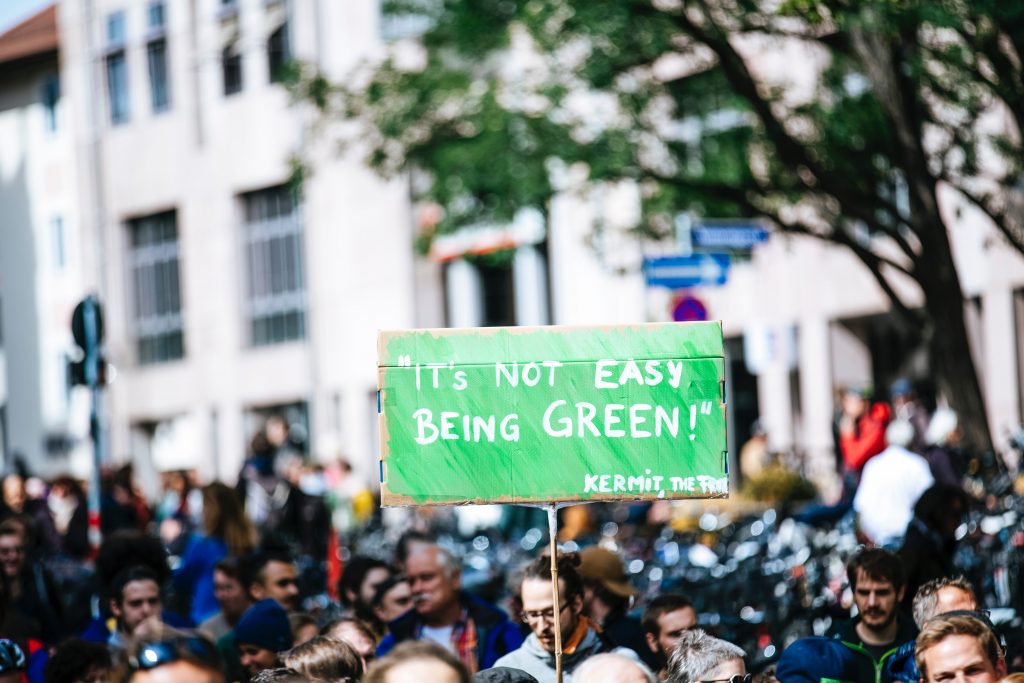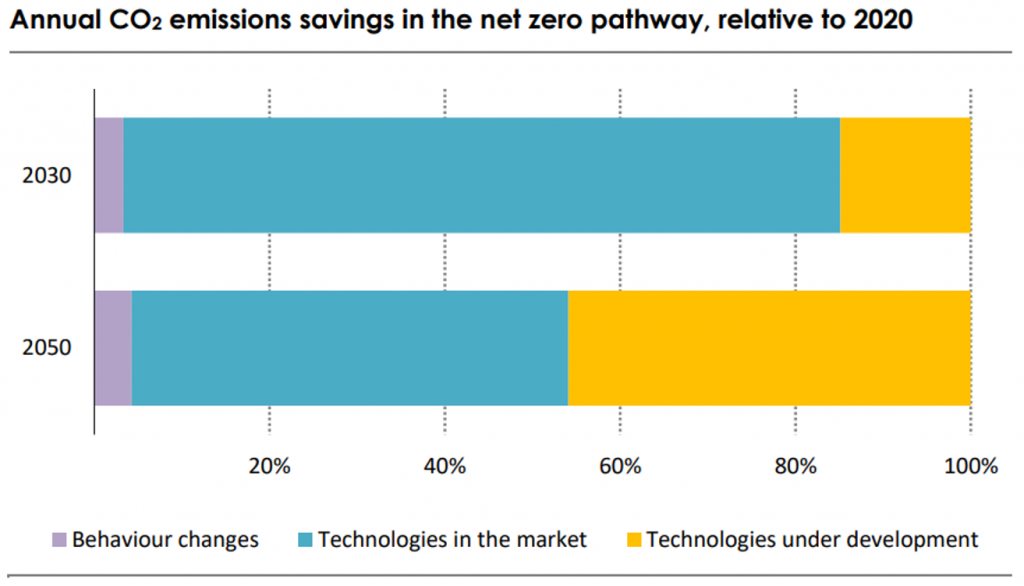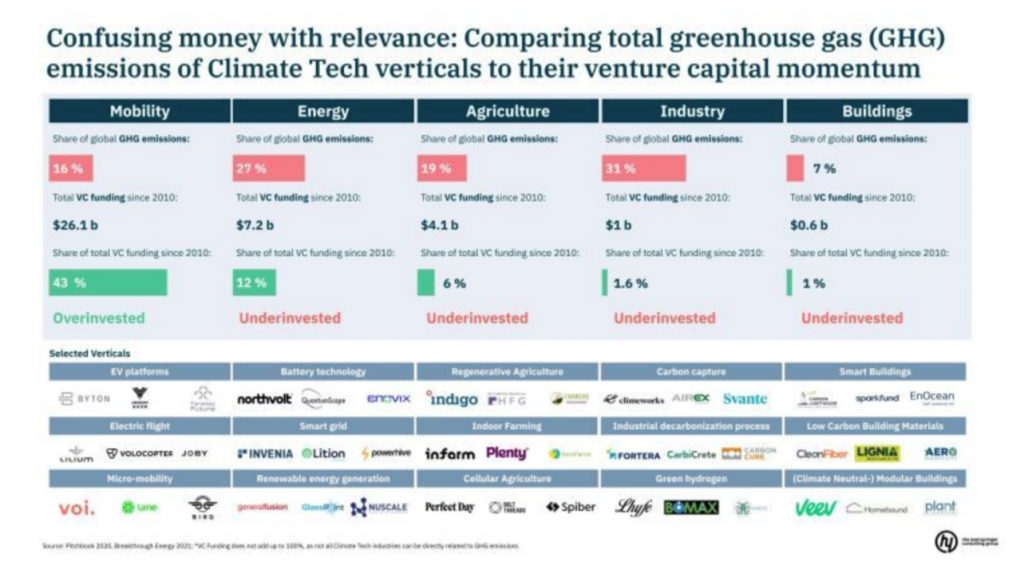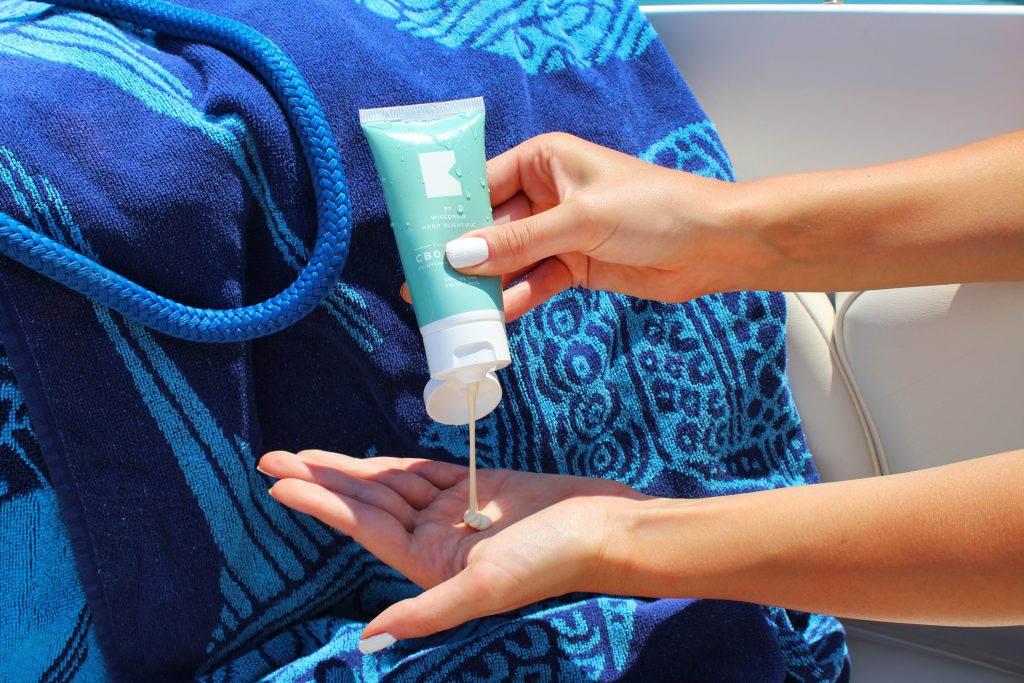Howdy 👋
We have some big deep dives coming up in the next few weeks. Can’t tell you how excited I am to share what our awesome team is working on.
Curious what’s coming?
Well you’ll have to stay tuned 🙃
– Swarnav S Pujari
In Your Inbox: How to reach net zero by 2050; The Green EU Deal; Environmentally friendly sunscreen

The International Energy Agency (IEA) recently published Net Zero by 2050: A Roadmap for the Global Energy Sector. The IEA makes the case that in order to reach net zero by 2050, we need to accelerate the development and deployment of clean technologies by 2030 – essentially, we should be focusing our efforts today on technologies already in the market, as well as technologies that are market-ready.

1) What technologies can become mass market ready by 2030 (or sooner), and
2) What do we need to do to get to net zero?
To answer the first question, I’ve turned to the experts.
Yair Reem from Extantia has mentioned that (green) hydrogen, sustainable aviation fuel (SAF), long-duration energy storage (LDES), and direct air capture (DAC) are the next technologies to reach price parity: “These are the technologies that will be on par by 2030 because they are no longer in the R&D/lab-scale phase. We see and invest in companies that are now building the first demo plants that will pave the road for commercial-scale plants. Considering it takes to 2-3 years to build a plant, we expect to have mature competitive technologies by the end of the decade.”
To reach net zero, we need to assess risk differently and innovate the financial mechanisms to fund innovation. By nature of the traditional 10-year lifetime of venture capital firms, they should figure out how to make somewhat riskier investments in technologies that need incubation time to reach affordability. Yair added that “The venture industry has the responsibility to take nascent technology and make it bankable so that the project finance can come in.” Not all tasks have the same sense of urgency, and some innovations, such as a renewable energy grid, are enablers for other technologies such as green hydrogen.

Meanwhile, to help technologies break into the market in the near term, new ways to assess risk and finance deployments are necessary.
We can’t solely rely on financially supporting climate positive technologies to reach net zero. We will also need policy and behavior change. Governments should be incentivizing individuals and businesses to make climate positive decisions by making climate negative choices less attractive, while incentivizing their replacements. Throughout this process, we’re going to become more conscious consumers. I believe that consumer behavior will account for more of the transition to net zero than the 4% that the IEA states. 4% is extremely low, especially when we are at a point in time where investors and organizations are paying attention to ESG more than ever before, and where consumers are demanding more sustainable practices.
Additional Credits: Thank you to Extantia for contributing to this article.
Sign up for The Impact and learn the perspectives behind the latest sustainability trends

Somewhat lost in the bedlam of headlines about flooding in Germany and wildfires in the US West, and more, each worsened by the deteriorating climate: the announcement of a European Green Deal. The coverage mentioned pronouncements of accelerated targets for reduced carbon output, and so on. The news cycle moved on.
But, wait. This looks like a big deal.
In fact, this has the hallmarks of a significant, even momentous step forward. First, it shows the EU, accounting for at least 15% of global economic activity, taking a stand in advance of this year’s UN global summit on climate change (COP26, November, Glasgow). The EU now is far more definitive than others in its commitments. For example, the statements by the US Biden administration preparing for taxes on imports from countries that fail carbon footprint outcomes seem less ambitious even while they add pressure on China and others to join in committing to do more.
To get there, they pledged to reduce emissions by at least 55% by 2030, compared to 1990 levels. The details collectively are what the EU is calling “fit for 55”, a reference to the 55% reduction target.
Important, and perhaps lost for many: this is not just a press conference, with uplifting speeches, a handout, and pretty words from PR professionals. Included in the EU releases are new legislation, directives, and policy proposals. The website that hosts the Green EU deal information offers 18 separate documents of details – in each of many of the languages of the EU – plus press releases, fact sheets and videos. In this piece, we give a summary: subsequent pieces (we hope) will dig into some details.
The subjects covered are many: Forest renewal; Switching from oil-based transportation; taking care of the poorer parts of the community who might be economically harmed during the transition; with investment in jobs for the post-fossil-fuel economy, and in clean transportation to reduce the impact of having fewer cars (or more expensive fossil fuels).
Can it be that we’re seeing a major economic force taking on the challenge of climate change? Going for the EU: the vast majority of its people seem aligned, with strong support for seeing addressing climate change as a top priority for Europe and for the world.
We’ve already seen Europe lead all other countries toward the adoption of policies on Internet privacy and personal rights (GDPR, the EU standard, which has prompted the adoption of similar legislation protecting individual rights in other countries and in individual US states, including California and New York). In doing so, it led in policy – and in framing the opportunities and challenges for incumbents and startups (and their investors). Now, the EU similarly is taking a position that at once sets its own goals and aims to offer guidance to other countries and regions on how to get carbon footprint reduction done.
The EU wants to achieve a whole-of-economy approach: building a “fair, competitive and green transition”. The overarching objectives of the EU plan are stated as: to transform the EU into a modern, resource-efficient and competitive economy, ensuring:

Getting a sunburn is bad, but did you know that current sunscreens are also harmful to the environment and potentially to humans? From excessive coral bleaching around the globe to studies showing how traditional sunscreens can be harmful to human health, there needs to be a change to our current formulations.
Gadusol Labs, a synthetic biology university spin-out company based in Corvallis, OR, has begun to produce a natural, powerful antioxidant that harnesses the inherent UV protective abilities of marine life. Katie Pettinger, CEO and Co-Founder, explains why she and her team began to work on materializing new, organic UV-protective compounds to protect our skin and the environment.
“The need for sunscreen is important as it protects you from skin cancer. When you go to the store, chances are the sunscreens you want to buy are spray formulations, since it eliminates the need to mess with thick creams and spreading lotion on your skin. Consumers want formulations with favorable and comfortable “fit and feel,” where they put it on and forget about it while continuing to be protected – essentially, formulations that are easy to wear and are easy to apply. However, the reason why spray sunscreens work so well is that they contain synthetic chemicals that function as UV filters that absorb into your skin.
Unlike other countries, in the U.S., sunscreens are considered drugs and are regulated by the FDA. Many of these synthetic chemical UV filters have been on the FDA sunscreen monograph (a.k.a., a list of approved active ingredients that the FDA has approved) for quite some time. However, recently, these ingredients have come under scrutiny as results from new studies on skin absorption levels and environmental impact have been published. One of the inherent issues is that these chemicals don’t just stay on the skin surface where they protect against UV, but get absorbed through the skin and into your body. They can stay in your blood for weeks after application at potentially unsafe levels and have been detected in urine and breastmilk.
Researchers started looking into this a few years ago when trying to discover the reason why coral bleaching was occurring — particularly in Hawaii and in the country of Palau. Coral bleaching is a big problem because healthy coral reefs are one of the most valuable ecosystems on the planet—both environmentally and economically. As researchers began to understand more about how these chemicals function, they realized how much they were affecting marine life. The National Oceanic and Atmospheric Administration warns against using several of the most popular chemical UV filters, such as oxybenzone, octinoxate, and octocrylene. These chemicals can induce defects in mussels, damage coral DNA, deform and kill young coral, decrease fertility and reproduction in fish, cause female characteristics in male fish, and damage and deform sea urchins, and can even accumulate in the tissues of dolphins! And of course, one has to think – if these chemicals can do all of this to marine life, what are they doing to us as humans? And so all of a sudden, consumers started to become more cognizant of potential human health issues related to sunscreens.
So the FDA did a few studies to see exactly how much of these chemicals were absorbed into the bloodstream after application – something that had not been studied before. The results were stunning: out of the six popular synthetic chemical UV filters studied, every one exceeded the FDA’s safety threshold of 0.5 nanograms per milliliter – the threshold at which the FDA says the ingredient should be analyzed to see if there is an increased risk of cancer, birth defects, etc. What is even more incredible and terrifying is the degree to which they exceeded this threshold – especially oxybenzone. After four days of use, subjects who had oxybenzone-containing sunscreen applied were found to have a concentration of up to 219 nanograms of oxybenzone per milliliter of blood. And while the effects of ~200 ng/mL of oxybenzone in the blood are still unknown, note that just 4 ng/mL of THC (the compound that gets you high when you consume marijuana) corresponds to 0.04% blood alcohol which is the level you would find in a 180-lb drinker. Take this into consideration when I also tell you that as of 2018 data, oxybenzone was in 66% or so of sunscreen products, according to an Environmental Working Group analysis, and that some of these active sunscreen ingredients were found to continue to accumulate in blood.
So after reviewing results from the initial study in 2019, the FDA issued a proposed rule that downgraded 12 active synthetic chemical sunscreen ingredients from the “Generally Recognized as Safe and Effective” status with the exceptions of zinc oxide and titanium dioxide, the only two mineral sunscreens, until more ingredient safety data are generated. The proposal was supposed to be finalized in November of 2019 but was overtaken by the coronavirus pandemic. Somehow, sunscreen legislation found its way into the 2020 CARES Act that President Trump signed into law, and things began to get confusing even for the experts. Now, the FDA is required to propose a revised sunscreen order by September 2021. It is unclear as to whether additional safety studies will still be required. In the meantime, the personal care product corporations that sell the popular sunscreen products have been spending time downplaying the cause for alarm. When September comes, no one knows what will happen next.
Nevertheless, consumers in the U.S., and especially those who are aware of the new ban in Hawaii of oxybenzone and octinoxate, have begun to shift towards safer, mineral-based sunscreens that are not as convenient to apply and wear. Ironically, some of you may remember how “back in the day” it was kind of cool to have the thick, colored zinc oxide smeared on your face kind of like a stripe. And honestly, that is the safest thing to do right now, because it works as a physical blocker and there is no danger of skin absorption. It’s almost like wearing a piece of clothing to protect yourself. But it’s like a thick cream, and of course, nobody really wants a thick cream, right? Also, especially if you’re of a non-white ethnicity, you may not really want to have something really white and pasty on your skin.
So here is the scary thing. Because so many companies are feeling the pressure to reformulate with either less or no synthetic chemicals, and are trying to make consumers happy with transparent, convenient formulations, with a high SPF, they are stuck between a rock and a hard place. If you want to get a high SPF with the safest form of zinc (non-nano) it takes upwards of 18-25% zinc oxide in formulation, which is the upper limit of what the FDA allows for zinc oxide in formulation. But that means your formulation is going to be thick and pasty. So what a lot of these companies are doing is adding an inactive ingredient called butyloctyl salicylate, which functions as an SPF booster.
Why is this a big deal? Well, some of you who have perhaps struggled with acne may be familiar with salicylic acid, a popular active ingredient in skin creams that essentially is an anti-inflammatory – a.k.a, it decreases skin redness, right? Butyloctyl salicylate falls within the same family as this popular ingredient, and it is theorized that it works well as an SPF booster because of its anti-inflammatory properties. It is also very cheap. The scary part is that a product that touts a high SPF but contains this booster may not actually be protecting you from the sun to the degree that you think – it just means that it allows your skin to not get sunburned so quickly. This means the formulation conveniently passes the FDA-mandated SPF tests on human subjects, therefore achieving a high SPF number, but that sunburn is still there, and it will show up later. It would seem that no one wants to talk about this or look into it, for two reasons — butyloctyl salicylate is so cheap, and well, what else is there to do to meet consumer demand at the price points they are familiar with?
Ok, so first, let me explain the difference between an active UV filter on the FDA sunscreen monograph and an inactive ingredient dubbed an SPF booster. Active ingredients have been proven to have significant inherent UV blocking properties and of course, have been approved by the FDA as a drug ingredient. Inactive ingredients are all the other ingredients in a sunscreen formulation that serve various functions (for example, moisturizer). SPF boosters are generally considered ingredients that do not have significant inherent UV blocking potential on their own, but when paired with actives and other inactives, can improve overall UV protection. So like, you wouldn’t go out and smear nanocellulose powder on your skin and expect to not get sunburned, right? But nanocellulose can work as an SPF booster because it improves the physical dispersion of active ingredients on your skin.
There are actually several natural, organic SPF boosters available, some plant-based, such as berry extract, sunflower sprout extract, algae extract, grape extract, etc. These “natural” boosters are inactive ingredients that provide minimal UV protection on their own – not enough to be an active – but enough antioxidant capability to work well with other ingredients in a sunscreen formulation. Now, I’m not a formulator, but from my conversations with formulators and other industry experts, I believe many if not all of these natural boosters have some combination of three issues: efficacy, high price, and reliability/consistency. For example, it is known that algae (basically seaweed) contains mycosporine-like amino acids, or MAAs for short, that are known to have some degree of natural UVA-protection – presumably, the reason why seaweed doesn’t suffer from degradation due to UV exposure. However, simply putting algae extract into a formulation doesn’t mean that the formulation is going to achieve a significantly higher SPF. For one, SPF is only a measure of UVB protection. But more importantly, because algae is a plant subject to environmental variations, there is no consistency in SPF protection per batch. For example, it is likely if you shine more sunlight on a batch of algae, it will make more MAAs. And if you shine less, it doesn’t make as much. So the unpurified extract has varying levels of MAAs per batch. And because sunscreens are regulated as drugs, it is extremely important to be sure that each batch of formulation being manufactured is meeting the same sun protection levels as marketed on the product packaging. Also, from a materials cost perspective, formulators are looking for ingredients that provide the biggest effectiveness – or SPF boost – for the price. A natural extract is going to be, in general, more expensive than a manufactured chemical. The reality is, synthetic chemicals are cheap to manufacture and allow for favorable profit margins for brands and distributors.
Gadusol is a fascinating natural compound that functions as a powerful antioxidant and free radical scavenger in marine organisms. Scientists have known about gadusol for decades after discovering it in ocean fish, but until a few years ago, it was assumed that fish were obtaining gadusol from their diet.
That is, until my co-founder scientists decided to research gadusol and learn more. Their first exciting discovery showed that gadusol was actually not obtained through diet – fish actually could produce it on their own! They then were able to isolate the genes responsible for making gadusol, and for the first time, engineer a yeast strain to produce gadusol in a lab environment, thanks to innovations in synthetic biology. From there, the next step was to see if it could work on humans to help protect human skin from the sun.
To explore gadusol’s potential in sunscreen formulation, our team launched Gadusol Laboratories and secured National Science Foundation SBIR funding in 2018. Several grants and some seed-stage investment dollars later, we have continued to make new discoveries. We can produce sufficient quantities of gadusol in a lab and we can purify it. We’ve completed essential safety and efficacy tests with no issues whatsoever and exciting results. We are now working on designing optimal mineral-based sunscreen formulations that include SPF-boosting natural gadusol while working on a commercial production process. We believe we can overcome the common issues with current natural SPF boosters, as early tests have shown that gadusol provides a substantial SPF boost when paired with approved actives, and we will have access to a reliable, pure source of it via synbio production. What does this mean? It means that, with gadusol, formulators will be able to design aesthetically pleasing sunscreen formulations that do not require large amounts of zinc oxide or titanium dioxide, enabling more transparent, comfortable lotions, that are reef-safe, sustainable, and effective, while packing the additional punch of antioxidant and free-radical scavenging power of gadusol.
Perhaps most exciting is a new innovation where we have been able to engineer and produce a derivative of gadusol that covers the UVA spectrum, which has the potential to actually be included in the FDA sunscreen monograph. Given that there are only two FDA-approved ingredients that cover UVA, and one has been found to be absorbed into the bloodstream at potentially unsafe levels, there is a tremendous need for one or more newly approved UVA-protective ingredients.
I think that we are just waking up as a society and as scientists to the full potential that nature offers to provide solutions to the challenges we face. There are just so many amazing discoveries at our fingertips thanks to the innovations in synthetic biology. Being able to take compounds that we know in nature provide amazing benefits, and for the first time overcome supply issues and economic issues and sustainability issues by manufacturing them in the safety and security of a lab with minimal environmental impact is insanely exciting. Developing and producing new sunscreen ingredients is one thing, but there are so many other opportunities. These synbio-produced compounds and ingredients can help feed us, solve our health issues, and ultimately help us design a better world for the next generation.
We are right on the verge of a couple important, key milestones that will enable our next round of funding. This next funding round will help us accomplish several things: secure strategic partnerships to manufacture and distribute gadusol, get gadusol into a significant number of sunscreen formulations by 2023, develop, test, and produce gadusol derivatives that will provide safe, natural UVA-protection for consumers, and explore other applications for gadusol and gadusol derivatives that expand beyond sunscreens into other personal care products.
The aspect of our work that also gets me very excited is being able to provide high quality jobs and opportunities for people – especially in Oregon — helping to improve quality of life through technology-based economic development and innovations. My long term vision, following a successful Gadusol Labs exit, is to be able to fund and spin out even more amazing, climate-friendly products and technologies from universities and research institutions. There is so much innovation that exists but there is a huge valley of death gap, manifested in both a gap in funding and a gap in entrepreneurial talent. So being able to work really aggressively to make that gap smaller, to create a bridge – that is what I want to do.
The world of climatetech and synthetic biology (synbio) have hit a crossroads, where two un-seemingly interconnected industries have the capacity to not only change how we as humans live in society, but also how we live and act in the environment. From AgTech with engineered proteins and cultured meats, AgTech with microbial biostimulants and biofertilizers, and now cosmetics, as showcased by Gadusol Labs, these industries all have the power to be transformed by climate-forward engineering for a safer, healthier tomorrow.
As for the sunscreen and cosmetics industry, it is time for a change to occur. The global market for sunscreen and sun care products is estimated to be roughly $13 billion dollars showing there is a lot of room and revenues to be had for new technologies in the space. With constant innovation in personal care for health and wellness, small changes to materials and ingredients can have profound impacts on the sector and environment. Gadusol Lab has a unique opportunity to revolutionize a major materials input and supply chain surrounding the sunscreen and cosmetics industry, and in doing so, breed new innovation and materials to continue this push towards a regenerative future, including limited the worsening effects of coral bleaching.
In the theme of BlueTech, seaweed and its derivatives are showing to be more than just pesky, abundant plants, but a key to carbon sequestration and human and environmental longevity. By understanding more of how each species of seaweed’s extract can be utilized and combined to make novel materials in conjunction with improved sustainable aquaculture practices, seaweed has a chance to be at the forefront of supply chains in the near future.
Roughly a third of all emissions that come from the agriculture sector is driven by factory farming and meat production.
This stat alone has driven significant climate investment into the alternative meats sector in the hopes that a technology will eventually be able to reduce the carbon footprint of this sector. Orbillion Bio is one such company that is focused in the lab-grown meats approach to addressing this problem.
Watch the full interview with Patricia on YouTube by clicking the button below!
Check out and subscribe to our Youtube Channel for future episodes!
Editors: Swarnav S Pujari, Daniel Kriozere Writers: Matthew Morris, John Connor Ryan
If you aren’t absolutely thrilled with The Impact, reply and let us know why. Or you can unsubscribe from all updates by clicking here.
Copyright © The Impact 2021. All Rights Reserved || 19 Morris Ave, Bldg 128, Brooklyn NY 11205
Develop your market map of up-and-coming climate startups and market opportunities by subscribing to our weekly newsletter for free.